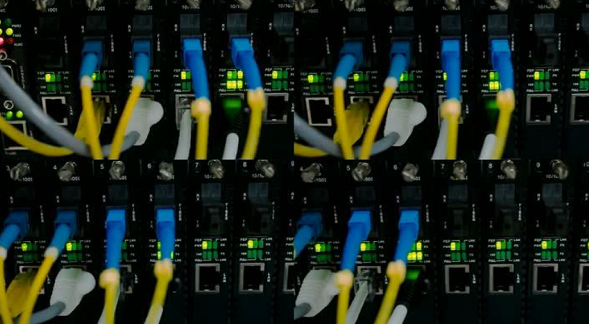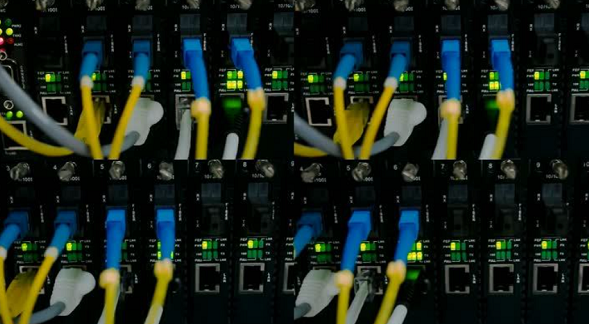News
Site Editor
 Site
https://leonetworkgroup.usa18.wondercdn.com/uploads/image/5fe152faa587d.png
The cables are made up of thin strands of fibre; these are formed of either glass or plastic. The fibres are surrounded by a cladding which has a mirror coating on the inside – we’ll come to why in a moment. Finally, there’s an outer sheath to protect the cable from damage.
The cable transmits data as pulses of light which travel down the fibre. Light, of course, likes to travel in a straight line, but cables need to go round corners. This is the reason for the mirror coating which allows the light pulses to bounce from side to side as they pass along the fibre.
Site
https://leonetworkgroup.usa18.wondercdn.com/uploads/image/5fe152faa587d.png
The cables are made up of thin strands of fibre; these are formed of either glass or plastic. The fibres are surrounded by a cladding which has a mirror coating on the inside – we’ll come to why in a moment. Finally, there’s an outer sheath to protect the cable from damage.
The cable transmits data as pulses of light which travel down the fibre. Light, of course, likes to travel in a straight line, but cables need to go round corners. This is the reason for the mirror coating which allows the light pulses to bounce from side to side as they pass along the fibre.
What Are Fiber Optic Cables Made Of?
Views: 2255
Author: Site Editor
Publish Time: 2021-11-10
Origin: Site
Fiber Basics
The cables are made up of thin strands of fiber; these are formed of either glass or plastic. The fibres are surrounded by a cladding which has a mirror coating on the inside – we’ll come to why in a moment. Finally, there’s an outer sheath to protect the cable from damage.
The cable transmits data as pulses of light which travel down the fibre. Light, of course, likes to travel in a straight line, but cables need to go round corners. This is the reason for the mirror coating which allows the light pulses to bounce from side to side as they pass along the fibre.
The major advantage of using light is that it is not subject to electrical interference as the signals on a copper cable may be, so it can be used in ‘noisy’ environments without problems. It also allows faster data transmission speeds.
What are fibre optic cables made of?
As noted above, fiber optic cables are constructed from numerous materials and components - but the core strands themselves are usually made from some combination of glass (silica) and/or plastic.
Plastic optical fibers tend to be more economical and easier to work with due to their increased flexibility, lighter weight and resistance to bending and shock. They’re generally used for applications where lower transmission rates and speeds are acceptable, and where the risk of mechanical stress is lower - such as in lower-speed, shorter-distance runs as part of home, industrial or automotive networks.
We’ll discuss the particular characteristics of the higher-grade silica glass cables a little further on in this guide.
Characteristics of fibre optic cables
As with any such product or component, there are a number of important characteristics and classifications of optical fibre cabling that will directly affect its efficacy and efficiency in terms of bandwidth, speed, signal strength and more. In this section, we’ll look a little more closely at some of the main influencing factors and properties that might dictate the overall performance of any given fibre optic cable.
What is Fiber Optic Cable Made From?
The use of fibre optics for networking is becoming increasingly common as fibre technology provides greater speed and reliability than the traditional copper alternatives. But what exactly is fibre optic cable, what is it made from and how does it work?

Types of Fibre
Just as there are different standards of copper cable, fibre optic cables too can vary. Types commonly in use are:
Single mode
Multimode
Glass
Plastic
Single mode fibre, as its name suggests, offers just one path for light to travel. This means it can offer reliable, fast transmission over long distances – typically gigabit speeds up to five kilometres. Multimode fibre has multiple paths, this is more commonly used for internal networking, offering gigabit speeds at distances of up to 500 metres or so, whereas single mode fibre is typically used to provide backbone services over longer distances.
Traditionally, fibre cables have been made of glass. This is generally robust and offers fast transmission speeds. However, it can be damaged if bent too sharply and needs specialist skills to cut and splice. Glass can be used for a variety of wavelengths of light, including infrared.
Plastic fibre cables tend to be larger in diameter and transmit light at different wavelengths – usually visible to the naked eye. This used to be at the expense of slower performance, but the latest materials make this less of a problem. Plastic is cheaper and it needs less specialist handling than glass as it’s easier to cut and fit connectors.
While glass is still preferable for use over longer distances, plastic is becoming more common in everyday applications. This is because it is more robust and easier to install as well as cheaper. That said, glass is still preferable in particularly hostile environments and it is less likely to degrade over time.
For more information about our product fiber optic system, please contact us immediately.
If you want to know more about industrial network cabinet,china fiber optic splice closure,china fiber optic distribution box,please consult the fiber optic splice closure factory




